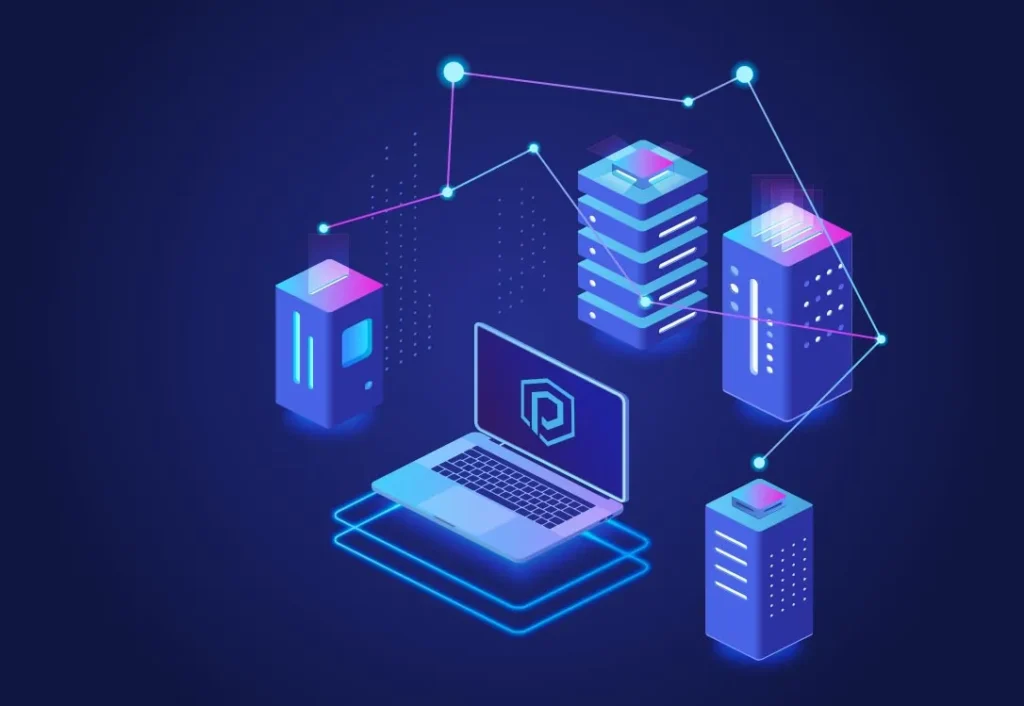Protos Security’s APIs and Other Data Integrations for Your Security Program
By Cameron Tabor, Protos Security’s Chief Technology Officer As the world continues to modernize, industry experts predict that the future of security includes more interconnectivity between systems. Data integrations for security are expected to become less of a value-added benefit and more of a must-have. Protos continues to lead the security guarding industry by actively researching and building modernization options into our software and growing possible integration points for our clients as just one way we can further enhance the industry. To remain ahead of this interconnectivity trend, Protos’ in-house software development team supports our guarding services and guard force management software by integrating with a variety of third-party software systems through APIs and other data integrations. Examples of our integration partners include popular case management platforms, reporting and procurement software and the proprietary systems utilized by our clients. These software services are readily available to all Protos clients, whether their security programs are emergency, temporary or ongoing.FREQUENTLY ASKED QUESTIONs
FIRST, HOW ARE APIS USED?
APIs (or Application Programming Interfaces) are commonly used by software providers to improve the user experience by connecting data. They allow for systems to safely communicate and share data with each other. Anyone who has signed up for a website or application using credentials from another site (like Google or Facebook), has experienced API integrations before. Many applications use APIs to pull in data points so they can be shared between the systems – such as an accounting program leveraging customer data information from a CRM (Customer Relationship Management) platform. Or linking a favorite dining spot to your Facebook so you don’t need to maintain multiple username and password combinations. Specific to the security industry, API integrations enable the transfer of data from one company’s software to another.
WHY DO APIS AND OTHER DATA INTEGRATIONS MATTER FOR A PHYSICAL SECURITY PROGRAM?
For Protos, this is because we not only meet the basic needs of staffing security officers at posts, but we also include guard force management software for all our clients. The data collected within our software can be accessed through our client portal< but is often more powerful when connected to other programs your organization is already using. This can help increase efficiency and give you a truly comprehensive view of your program.
WHAT IS GUARD FORCE MANAGEMENT SOFTWARE?
The Protos client portal is a guard force management tool that delivers improved transparency, accuracy, accountability and efficiency. It provides real-time data for greater visibility as well as historical data for identification of longer-term trends and analysis.
When evaluating future software enhancements, the Protos team relies on feedback from clients to prioritize focus areas. The goal of all software releases is to streamline data and display important metrics in a concise fashion so clients gain valuable time back in their day and the ability to prioritize other important initiatives. From ordering officers on your phone and ensuring officers are currently onsite to tracking KPIs and downloading detailed reports, managing your security program is easy from one centralized location.
WHAT TYPE OF DATA DOES PROTOS TRACK FOR ITS CLIENTS?
Protos collects a variety of data to help clients better manage their security programs and this information can then be integrated into other systems. This data falls into a few categories, with some examples listed below. Many of these data points can be sorted for a variety of different views as well, such as narrowing into specific areas or regions. To see the true power of the Protos client portal and how this data can work to improve your security program, request a demo.
Finance & Budgeting: real-time spend as well as historical data based on location, post, date/time of service, type of service, category, reason for the service request, number of requests and scheduled vs actual spend.
Vendor Data: locations of headquarters/branches as well as their performance metrics such as percentage of open posts, tardies (officers late to arrive at their posts) and number of incidents reported.
Incident Data: date, time, location, severity, type, security schedule for the day/time of the event, description, transcripts, and images (when they’ve been submitted).
Schedules & Reports: schedule for supervisor visits, security post scheduling, service requests, status of requests and scheduled coverage vs actual coverage.
Quality Assurance: QA surveys and reports by location, indicating satisfaction with both Protos, the vendor(s) serving the client and details of supervisor visits.
WHAT ARE SOME ADVANTAGES TO USING APIS?
They allow for greater efficiency through faster information sharing between software systems as well as reducing issues with version control because information doesn’t have to be manually exported from one platform and then imported to another. Additionally, these integrations make it easier to analyze data points collected from multiple sources.
Below are just a few examples and, since each client has unique systems/processes in place, the solutions are often tailored to each client’s needs:
Incident data can be more easily cross-analyzed alongside shrink statistics gathered by another software provider.
Actual security spend data can be quickly compared to internal budget numbers.
Incident reporting can be aligned with active internal case management tools.
Return on investment (ROI) can be derived from the security program via incident reporting and spend compared to internal metrics.
WHY DOES PROTOS UTILIZE API INTEGRATIONS?
Although our client portal stands successfully on its own, Protos offers API integrations because it supports our service first culture. Many of our clients have a software platform they work in regularly – such as case management, reporting or procurement software – and it can often be more efficient to access all necessary information in one program, rather than logging into multiple platforms.
ARE THERE ANY COSTS ASSOCIATED WITH PROTOS' API INTEGRATIONS?
When possible, Protos provides this service as an included value for our clients. However, each potential integration is evaluated on a case-by-case basis so cost can vary based on scope and uniqueness of the project. The software you’d like the Protos data to integrate with may require a fee or different type of license in order to establish API integrations, so it is important to check with the other provider as well for a full understanding of potential cost.
HOW DOES PROTOS START INTEGRATING WITH OTHER SOFTWARE?
Protos integration experts work directly with the other program’s team. Once the needs of the client have been established, Protos and the other provider will initiate conversations to determine specific involvement and responsibilities between the two teams. Representatives from both operations and IT will work together to establish what is needed from both the business and technical standpoints. Then both organizations gain a deeper understand each other’s capabilities to share data and begin to establish a roadmap that goes from the planning stage through execution.
DO OTHER SECURITY GUARDING COMPANIES OFFER THESE INTEGRATIONS?
Other security guarding companies with software offerings are often times not willing to customize security programs, including establishing integrations. Even some of the largest providers require officers to duplicate work by clocking in through two different systems or will decrease efficiency by not properly sharing other essential information.
Protos stands apart from the competition through our in-house software development team and by offering benefits such as API integrations. Unlike many other providers, Protos believes that your data is your own so you should be able to use it how you’d like – and access it where you need it most.
WHAT TYPE OF DATA DO CLIENTS WANT INTEGRATED INTO OTHER SOFTWARE?
Different functional areas of each organization have different needs for an API integration from Protos. Procurement teams often benefit most from data like time & attendance, budget spend and vendor performance. Security teams are often most concerned about metrics to prove the success of their program, such as ROI, vendor performance, incident reporting and data analysis to spot trends. Case management functions are similar to security, but they tend to seek data that deals directly with particular events rather than a comprehensive view.
WHAT ARE SOME EXAMPLES OF DATA THAT CAN BE SHARED WITH OTHER SYSTEMS?
Any data contained within the Protos client portal could be shared with other systems if desired. Popular examples include contact information for the vendor(s) serving the client, incident reporting, budgeting, invoices and security post coverage.
CAN THESE INTEGRATIONS INCLUDE SINGLE SIGN-ON (SSO)?
Yes, Protos uses open-source standards as well as proprietary options as needed. This can include OAuth SSO as well as other options.
WHAT OTHER PROVIDERS CAN PROTOS SEAMLESSLY INTEGRATE WITH?
Protos partners with many popular case management, reporting and procurement tools, including:
Service Channel
Coupa
CAP Index
FM Pilot
SAP Ariba
ThinkLP
Oracle
Other proprietary software
HOW DO PROTOS CLIENTS BENEFIT FROM API INTEGRATIONS?
The customer success stories below provide examples of how some of our largest clients utilize API integrations to increase efficiency, gain more holistic insights into their programs, generate their own business intelligence solutions and more.
CUSTOMER SUCCESS STORIES

ORACLE-BASED PROPRIETARY SOFTWARE INTEGRATION
Opportunity: A Fortune 500 national department store chain was routinely requesting service through the Protos client portal and then duplicating the same information within their requisition system. Although this process was not unmanageable, there was clear potential for streamlining work and increasing efficiency.
Solution: By establishing an API integration between the Protos client portal and the client’s Oracle-based proprietary requisition program, new security guarding work orders began to be processed directly through the requisition system. Once a purchase is approved through the requisition system, it automatically requests the work to be done by the Protos dispatch team so the service can be provided in a more efficient and timely manner.
CAP INDEX INTEGRATION
Opportunity: A Fortune 100 international retail company was routinely logging service through two platforms which was inefficient. Adding to this inefficiency, this system of manual duplication also occasionally led to discrepancies between what was entered into each system.
Solution: By creating an API integration between Protos and CAP Index, the client received a streamlined process as well as a more holistic view of its risk levels. This integration allows for a seamless comparison of risks projected by CAP Index and actual incidents occurring at each location through Protos’ data.


THINKLP INTEGRATION
Opportunity: A fortune 100 retail pharmacy sought to have a more comprehensive view of its loss prevention and asset protection programs without having to merge reports from multiple systems.
Solution: Protos created a data feed with multiple export options that would integrate with ThinkLP. The client is now able to export content in a way that helps them generate their own business intelligence solutions and data analytics.
Want to save a copy of the information above?
About Cameron Tabor
Cameron Tabor joined Protos Security in 2014 as Chief Technology Officer. With over 20 years of experience, Cameron has made a distinguished career of building and managing software systems. His past roles include Software Architect for companies including InnovaSystems International and Reynolds & Reynolds. Now, as the lead software architect for Protos, his contributions are essential as we continue to innovate, delivering new value-added benefits to our clients. Cameron holds a bachelor’s degree in computer science from the Virginia Military Institute. Learn more about Cameron and the rest of Team Protos.
